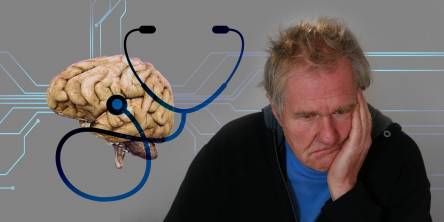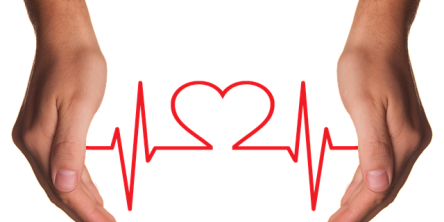5 Tips to Deal With Sciatica Pain

Most people are familiar with sciatica, defined as low back pain that spreads downward into the left or right buttock, leg, and, in some cases, foot. The pain can be intense in some situations, and despite popular belief, sciatica typically resolves within three months with conservative treatment. The "conservative treatment" mentioned here refers to non-invasive therapies that can be performed in the comfort of your own home.
The five at-home sciatica therapies listed below are suitable for persons who have recently started experiencing sciatic nerve pain or whose pain is not severe; however, you should see your doctor before using any of these at-home treatments.
If you've had sciatica for a few weeks or have severe low back and leg pain, you should consult a sciatica doctor.
Tip 1 - Exercise
It may feel strange to exercise when you're in pain, but evidence suggests that resting too long can exacerbate your back and leg discomfort. Instead, add modest activity into your daily routine to help relieve sciatica. The key is mild. Exercise shouldn't be uncomfortable or hard.
A walk around the block is an excellent example of physical activity that strengthens your spine without causing more harm.
Exercise not only strengthens your spine (for example, core exercises such as planks; a stronger spine protects against pain) but also releases endorphins, which reduce your perception of pain.
Tip 2 - Stretch It Out
Add mild stretching to your everyday regimen. Stretching is an effective way to increase spine flexibility and range of motion while also developing core and spinal strength. Furthermore, most stretches are simple enough to perform while watching the news or a favorite movie.
Tip 3 - Grab the Ice Pack and Heating Pad
Alternating heat and ice therapy might provide instant relief from sciatic discomfort. Ice can help reduce inflammation, although heat increases blood flow to the sore location (which accelerates recovery). Heat and ice may also help relieve the painful muscular spasms that frequently accompany sciatica.
Apply an ice pack to the painful area for 15 minutes every hour, followed by 15 minutes of heat every two to three hours. Always use a barrier (such as a towel) to protect your skin when utilizing heat or ice therapy, and never sleep while doing so.
Tip 4 - Refresh Your Posture
Whether you're at work or relaxing at home, if you stay in the same position for too long, your sciatica pain may worsen. Changing your position every 20 minutes and practicing appropriate posture will help relieve pressure on your spine and minimize sciatica pain.
Tip 5 - Head to the Medicine Cabinet
When sciatica symptoms appear, over-the-counter (OTC) nonsteroidal anti-inflammatory medicines (NSAIDs) may help relieve them. NSAIDs can be a useful alternative because they lower both inflammation and pain, as opposed to acetaminophen (Tylenol), which simply relieves pain.
However, NSAIDs have health hazards that should be understood before using them, so consult your doctor first. OTC NSAIDs include ibuprofen (Advil and Motrin), aspirin (Ecotrin), and naproxen (Aleve).
When Your Sciatica Requires a Visit to Your Doctor
It's critical to notice when at-home treatments aren't helping your sciatica. If none of these treatments work for you, you should consult your primary care physician or a spinal specialist.
People avoid seeing doctors for a variety of reasons. Perhaps you are confused about how to use your health insurance, or you do not have any. Perhaps you don't enjoy going to the doctor and prefer the "ignorance-is-bliss" approach.
Whatever the cause, certain sciatica symptoms are serious medical problems. In rare circumstances, postponing medical care can result in permanent nerve damage. If you have any of the following symptoms, please consult your doctor as soon as possible.
- You are experiencing acute pain in your lower back and legs.
- You have nerve-related symptoms, like weakness, numbness, tingling, or electric shock-like pain.
- Your pain does not improve after two weeks.
- Your pain worsens even when you use at-home therapy.
- You have lost bowel and/or bladder control.
Easing the severe pain of sciatica does not always necessitate an intensive treatment method. Relief from sciatic nerve pain at home with modest exercise, cold and heat therapy, appropriate posture, and medicine may help you heal faster.
Similar Articles
Have you recently heard about the incredible benefits of stem cell therapy for Alzheimer's and want to try this therapy for your loved one? Before doing so, it's important to know that while stem cell therapy is effective, post-treatment care plays a key role in recovery, too.
Discover 5 effective at-home remedies to combat winter diseases. From flu to colds, learn how to stay healthy and resilient during the chilly season.
Clickbait articles. Wild conspiracies. Misheard conversations. All of these things can lead to misinformation. Misinformation can become incredibly dangerous. Not only does it cause fear, but it can influence decision-making. People have allowed lies to influence their healthcare and voting habits. Not only this, but it can create prejudices that can ruin lives.
Conditions like Parkinson's, essential tremor, and dystonia are on the rise, affecting people of all ages and backgrounds. From subtle tremors to major coordination issues, these disorders can greatly affect daily life. Understanding their causes, symptoms, and treatments helps us detect and manage them early, improving overall quality of life.
When it comes to personal hygiene, ears aren’t usually something people tend to worry about. You may give them a quick rinse while in the shower, and then not think twice about it, that is until they start bothering you. Ears are generally thought of as self-cleaning, as earwax tends to soften on its own and not build up.
Hardly anyone is ever prepared for death, even if it’s not unexpected. Unfortunately, most of the leading causes of death in Illinois and all over the United States are unexpected. On the other hand, most are also preventable. Here’s a look at the top five leading causes of death in Illinois.
Cancer is diagnosed every two minutes in the UK, a word that instills dread and evokes fear and worry. Treating cancer can often be a rollercoaster.
It's a good idea to discuss Crohn's disease with your doctor if you experience pain. Crohn's disease frequently causes pain, but there are ways to manage it.
The COVID19 vaccine supply chain has a decisive role to play in enabling efficient vaccination to people. But, the current supply chains are broken and diminished in many cases, posing challenges to effective vaccine distribution.









